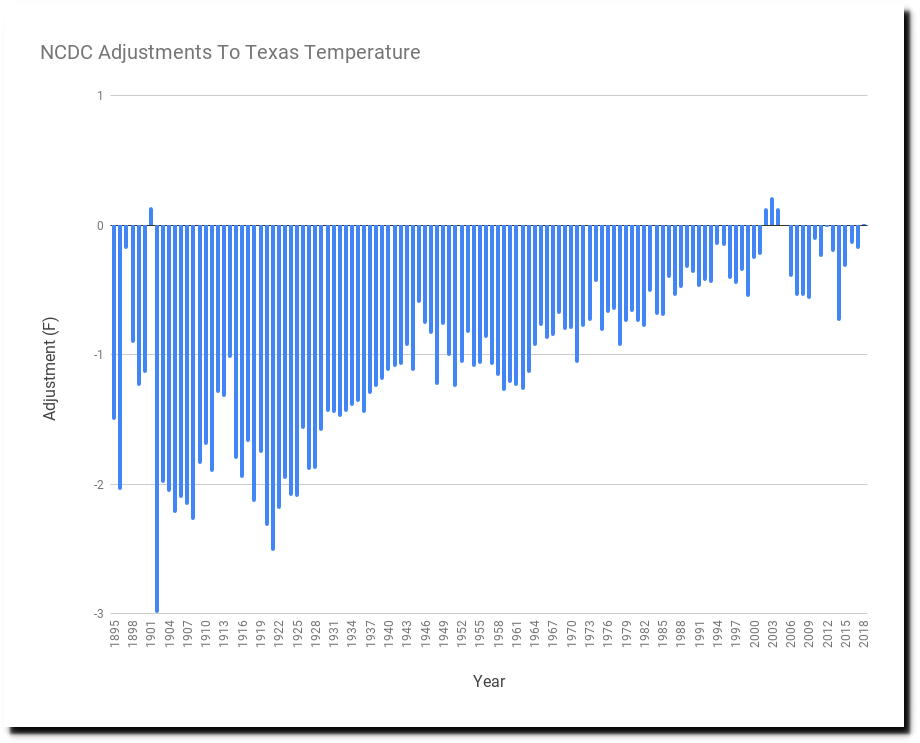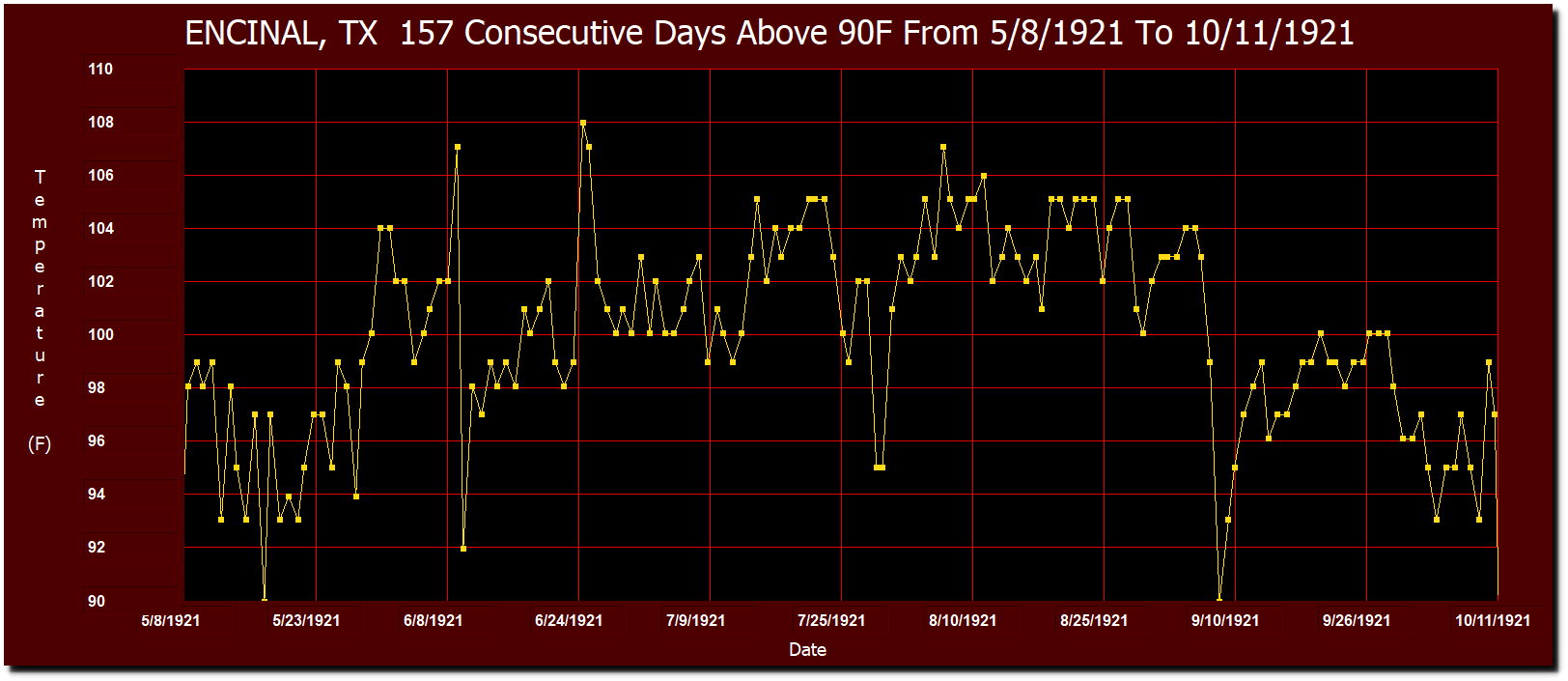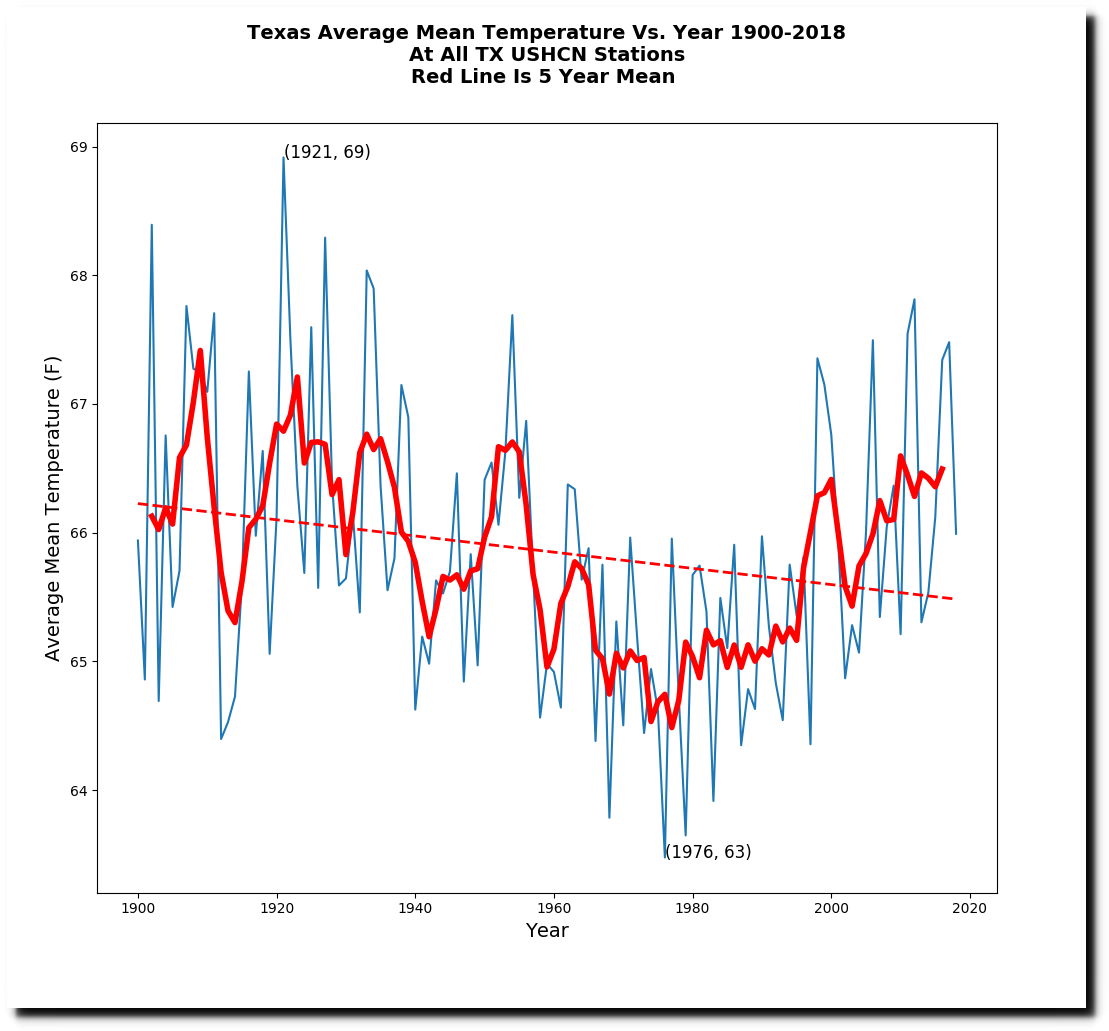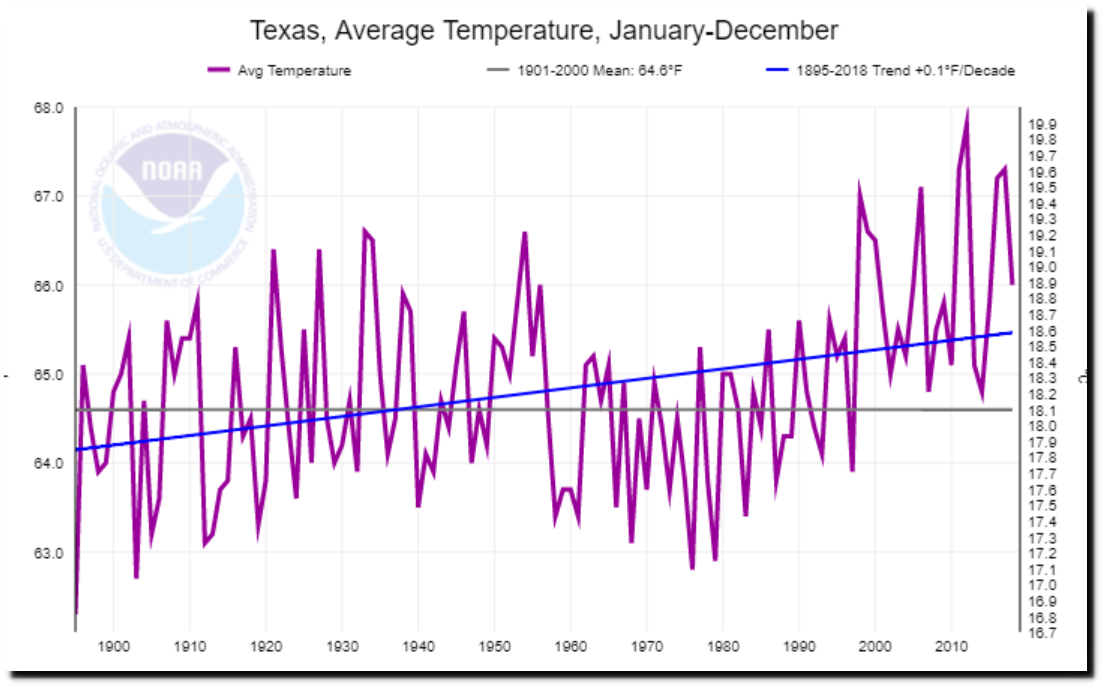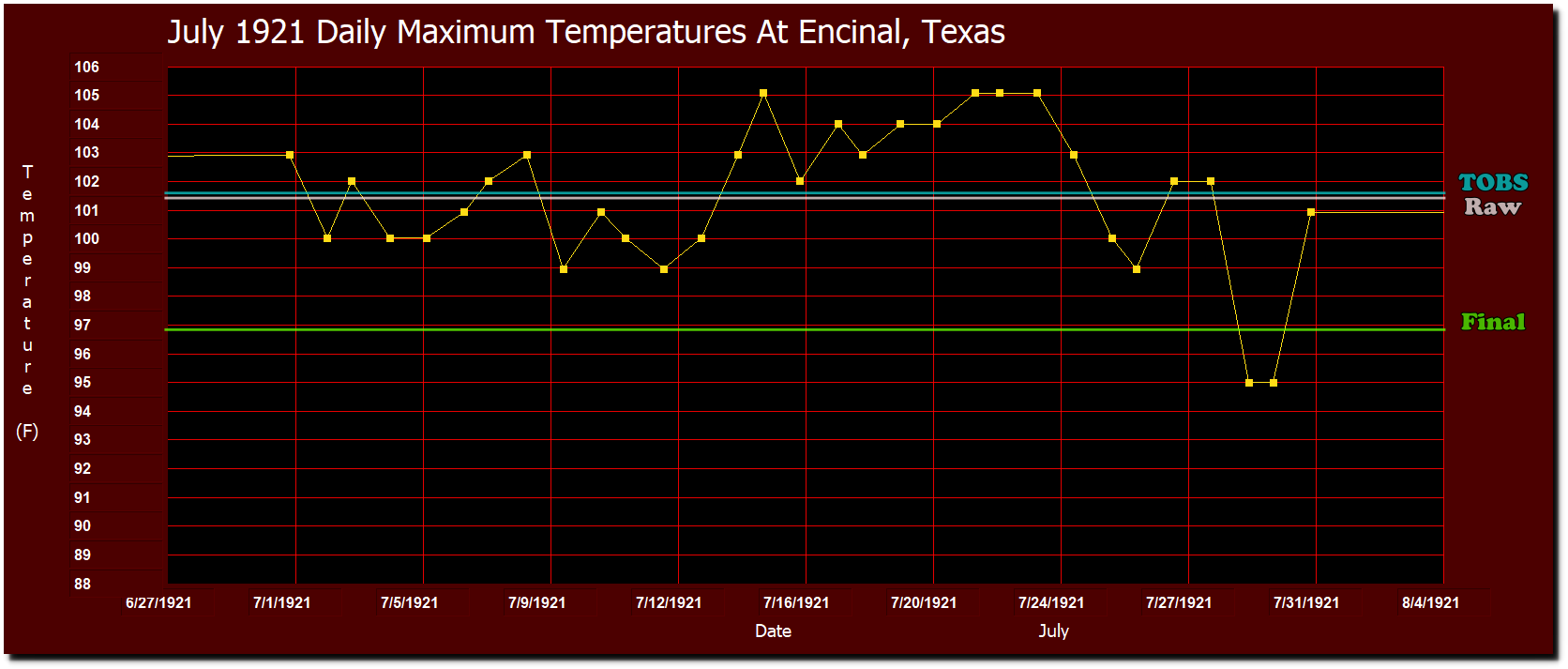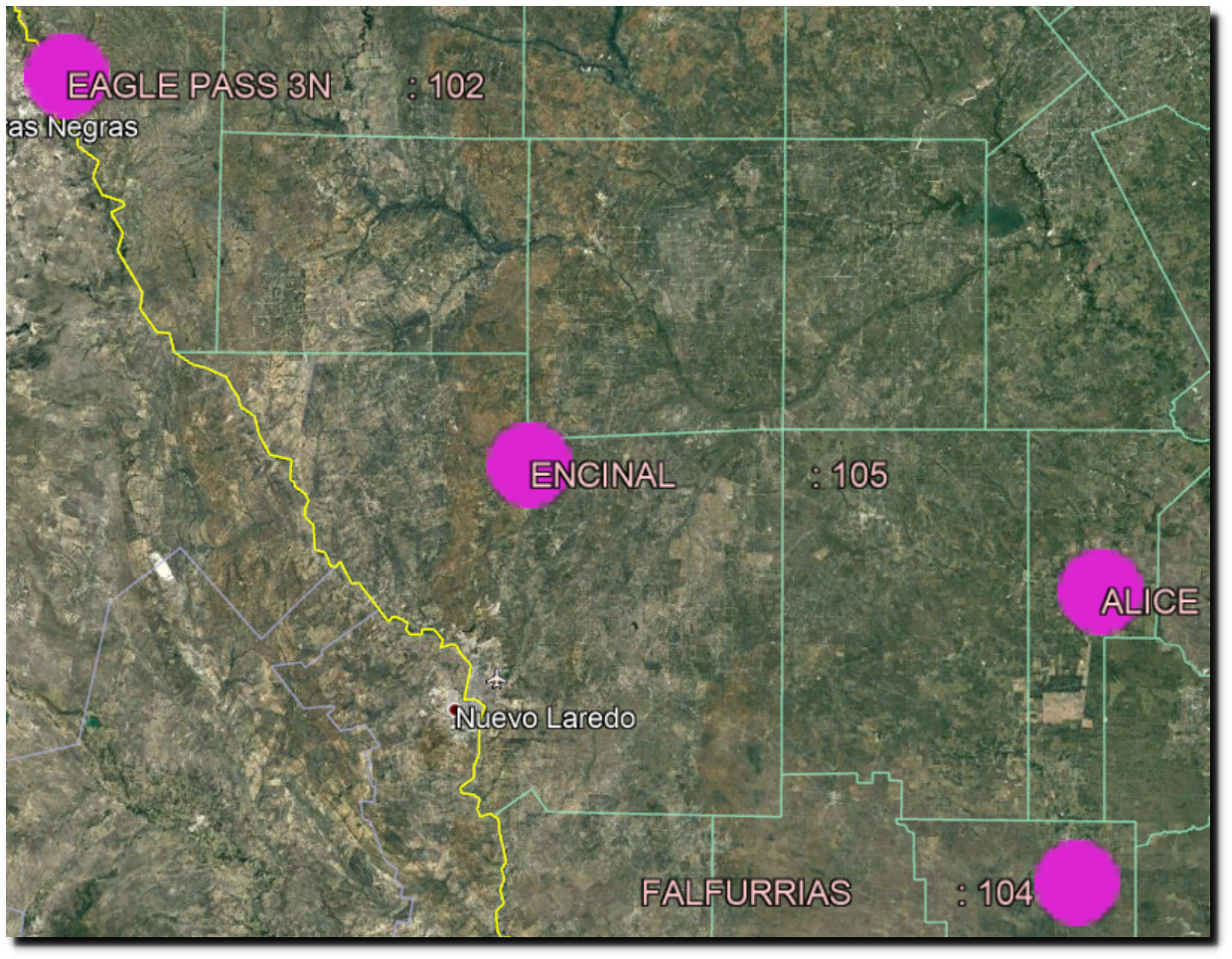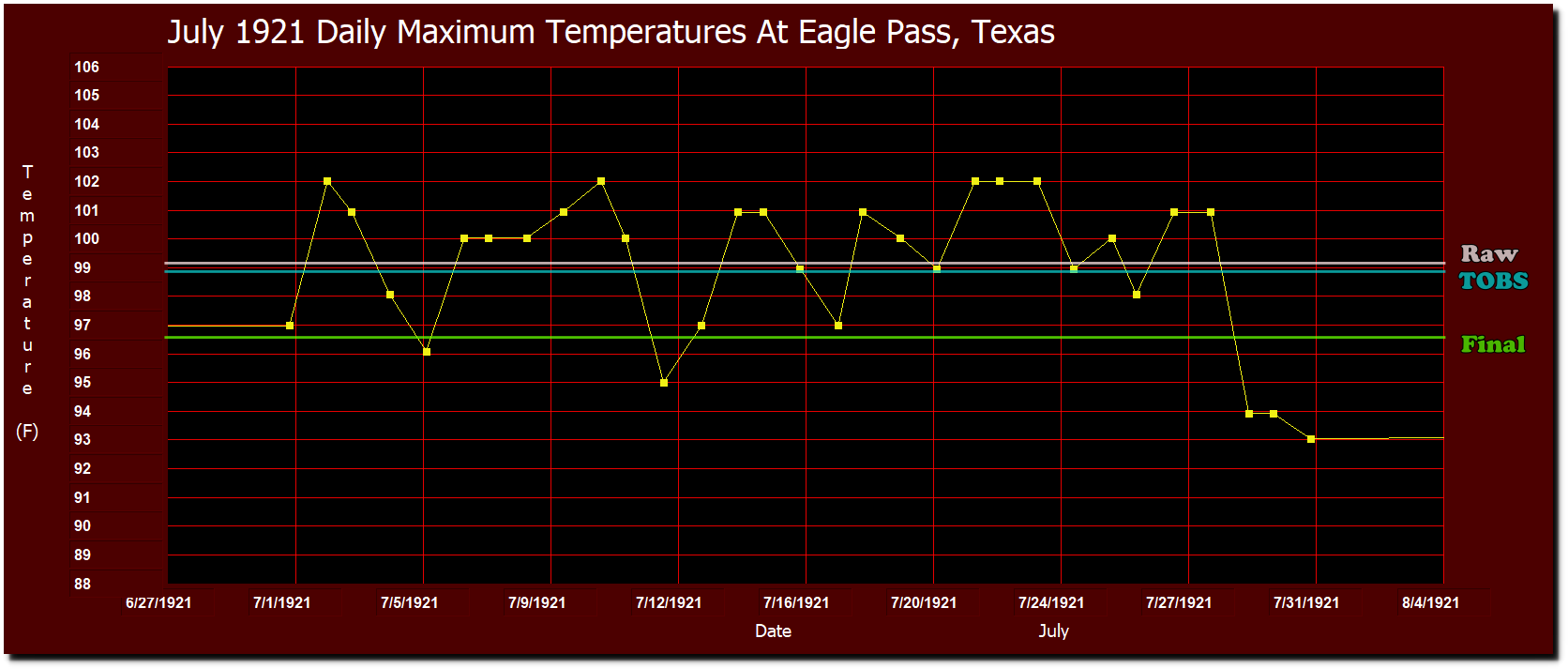Texas had their longest heatwave at Encinal in 1921, with 157 consecutive days above 90F from May 8 to October 11, 1921.
The NOAA USHCN thermometer data for Texas shows 1921 as the hottest year, with Texas cooling since 1895.
Yet the NOAA NCEI graph for Texas shows Texas warming, and 1921 as not being a particularly hot year.
Climate at a Glance | National Centers for Environmental Information (NCEI)
This is very different from their 2012 version of the same graph, which showed 1921 as the hottest year, and no warming.
Climate scientists who have been claiming Texas is warming are totally wrong. | Watts Up With That?
This got me wondering – how did NOAA recently erase the record heat of 1921 in Texas? So I looked at the Raw, TOBS (Time of Observation Bias Adjusted) and Final Adjusted monthly maximum temperatures for Encinal, Texas in July, 1921.
During that month, temperatures at Encinal were recorded at 7am, and the TOBS adjusted data has the highest monthly average at 101.6F. The Raw temperature average is 101.5F, but the Final Adjusted average is 4.6F cooler at 96.9 degrees. Note that nothing in the graph below is calculated – all of the data being plotted is taken directly from the NOAA USHCN daily and monthly data sets.
The Final adjusted monthly maximum average of 96.9F is cooler than 29 out of 31 daily maximum temperatures at Encinal.
Encinal’s neighboring USHCN stations which reported for the full month of July, 1921 are Falfurrias, Eagle Pass, and Alice, Texas.
Falfurrias is a similar story. All but two of the days were above the final adjusted temperature, which was 5.8 degrees cooler than the measured temperature and 5.5 degrees cooler than the TOBS adjusted temperature.
At Eagle Pass, all but five of the days were above the final adjusted temperature, which was 2.4 degrees cooler than the measured temperature and 2.2 degrees cooler than the TOBS adjusted temperature.
At Alice, all but eight of the days were above the final adjusted temperature, which was 2.3 degrees cooler than the measured temperature and 2.4 degrees cooler than the TOBS adjusted temperature.
So you can’t explain the adjustments by Time of Observation bias adjustments, and you can’t explain them by homogenization either – because all of the neighbors show the same pathological symptoms.
This is science and mathematics at its absolute worst. NOAA is making a farce out of climate science with this sort of mathematical nonsense.
The only legitimate explanation for this is that the Final adjusted data is fraudulent. And it is clear from the changes to NOAA Texas graphs that this is occurring all over Texas. Across the entire state of Texas, 1921 temperatures are adjusted downwards by an average of 2.5 degrees. There is no plausible explanation for why this is being done.
